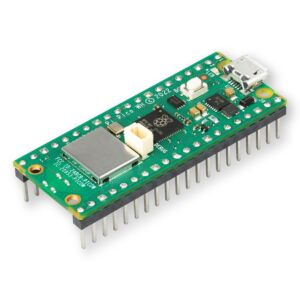Related Content
Transcript
Well, here we are at the end. If you've gotten through this course to this video, congratulations, you have made it. The internet is chock full of free online courses and educational resources like this one, and fairly few people actually go out there and learn it, so congratulations on that.
So where to from here now that we've done with the course? Well, I'd like to reiterate this again. With this course, we have just given you a range of tools and skills to put into your Maker toolbox, and it's up to you how you use them. So go out and do something. In other words, start a project, start building something fun, start building something useful, just start building something. You have the skills to do it now.
Want to make a mailbox monitoring system? You have the skills to read a button or some sort of sensor and wirelessly report that information. Want to make a robotic arm? You know how to use servos and logics to control and manipulate that arm. Or what about a weather station? You can plug in some I2C or UART devices and report that on an OLED display, or again, wirelessly transmit that data. You now have the skills to do some really incredible things.
Throughout this course, you've probably had a few ideas of things that you could make. Go out and make them, but if you need a hand, we have a page of cool community projects and a whole range of guides on random various topics and things to do to just help get those creative juices flowing. And as always, we'll have a link to those on the course page.
And it is really important to do projects like these because from here, it gets harder and harder to learn by watching a course like this one. Much of the MicroPython and Pico-related skills that you're going to learn will be through doing. You're going to learn all those little things that can't be taught in a classroom environment.
Something else to keep in mind is that we have only learned a specific set of maker skills. There are other tools out there that are really valuable to your maker toolbox. If you learn how to, for example, 3D model in CAD and 3D print stuff, you can make enclosures and mounts and custom parts for your projects. And if you're interested in this, we have an entire crash course on some of these essential foundational maker skills to really flush out your maker toolbox linked on the course page as well.
And one more thing, if you ever get stuck or need guidance with something maker-related, check out our community forums. We have a really great community of people over there working on a whole bunch of weird and wonderful things, and they really love helping people with their projects and giving guidance and just helping in general.
Regardless of what you're going to do, we here at Core Electronics congratulate you on finishing this course and wish you the very best of luck with whatever venture you end up undertaking. Now get out there and make something.
Comments

Makers love reviews as much as you do, please follow this link to review the products you have purchased.


